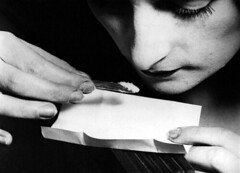Spotting Cocaine Addiction
This notorious white powder that cocaine is has its origins in leaves derived from the South American coca plant. Leaves that were being freely used by the Mayans for their stimulating qualities became known to Europe following Spain’s conquest of that continent.
Described as a stimulant, cocaine can be ingested in many ways, be it smoking, injection into the veins, or what is called snorting via the nose. No matter how it is consumed, its effects of this highly addictive drug are the same. However, it is known that no fewer than 90 percent of the people who use it do so occasionally; it is only the remaining 10 percent that are known to be addicts, or those who use it at a frequency that is equal to or exceeds once a week.
Effects of cocaine addiction New York: In the short run, the effects a cocaine addict feels on the body are unreasonable irritability, excitability to the extreme, uncontrollable restlessness and difficulty in sleeping. In the next state, the cocaine addict experiences fretfulness, anxiety even when there is no reason for it and importantly, delusions in the sensory perceptions and a feeling that insects crawl on the surface of the skin.
The physical manifestations of these effects a cocaine addict New York experiences are increased heart rate and blood pressure, fast breathing and enlarged reactive pupils.
Symptoms of cocaine withdrawal: When a cocaine addict attempts withdrawal from the use of the drug, the immediate signs that are seen are paranoia, confusion, impulsiveness, hallucinations, hyperactivity and agitation. The physical symptoms of cocaine withdrawal may include nausea, abdominal cramps, fever, diarrhea, exhaustion and chills. Insomnia, ennui, disorientation, depression, muscle pains and irresistible craving for cocaine are the other effects a cocaine addict feels once he tries to attempt cocaine detoxification.
Cocaine addiction treatment programs New York: The ultimate goal of cocaine addiction treatment programs is abstinence, or weaning the cocaine addict from the drug. It is interesting to note that cocaine rehabs administer cocaine addiction treatment programs only when the drug use starts interfering in day-to-day activities, such as broken marriage, harm to children, absenteeism from work, reduced efficiency at work or job loss.
The first step at cocaine rehab is to cleanse the body of the toxins overuse of the drug has brought into the system. This may take anywhere between four and ten months after intervention by a cocaine detox center. The actual treatment commences once the body mechanism and chemicals come back to normal.
This is followed by cocaine addiction treatment programs that lessen the craving. Drugs such as dopamine show good effect in helping the cocaine addict have a reduced feeling of longing. Acupuncture is also a proven method in this step.
Finally, cocaine rehab centers include counseling, family therapy, psychotherapy, education about drug abuse and addiction, acupuncture, and relaxation training as part of the treatment. These may or may not require hospitalization, and is individual-specific.
Related articles by Zemanta
- New Drug Helps Recovering Cocaine Addicts Avoid Relapse (ivanhoe.com)
- Lady Gaga admits current cocaine usage (hollywoodnews.com)
- New Crack-Cocaine Sentencing Disparity, Slightly Less Racist Than Before (race.change.org)
- MicroRNAs play a role in cocaine addiction (physorg.com)
- Cocaine addicts vaccine that makes immune system see drug as ‘intruder’ (dailymail.co.uk)

